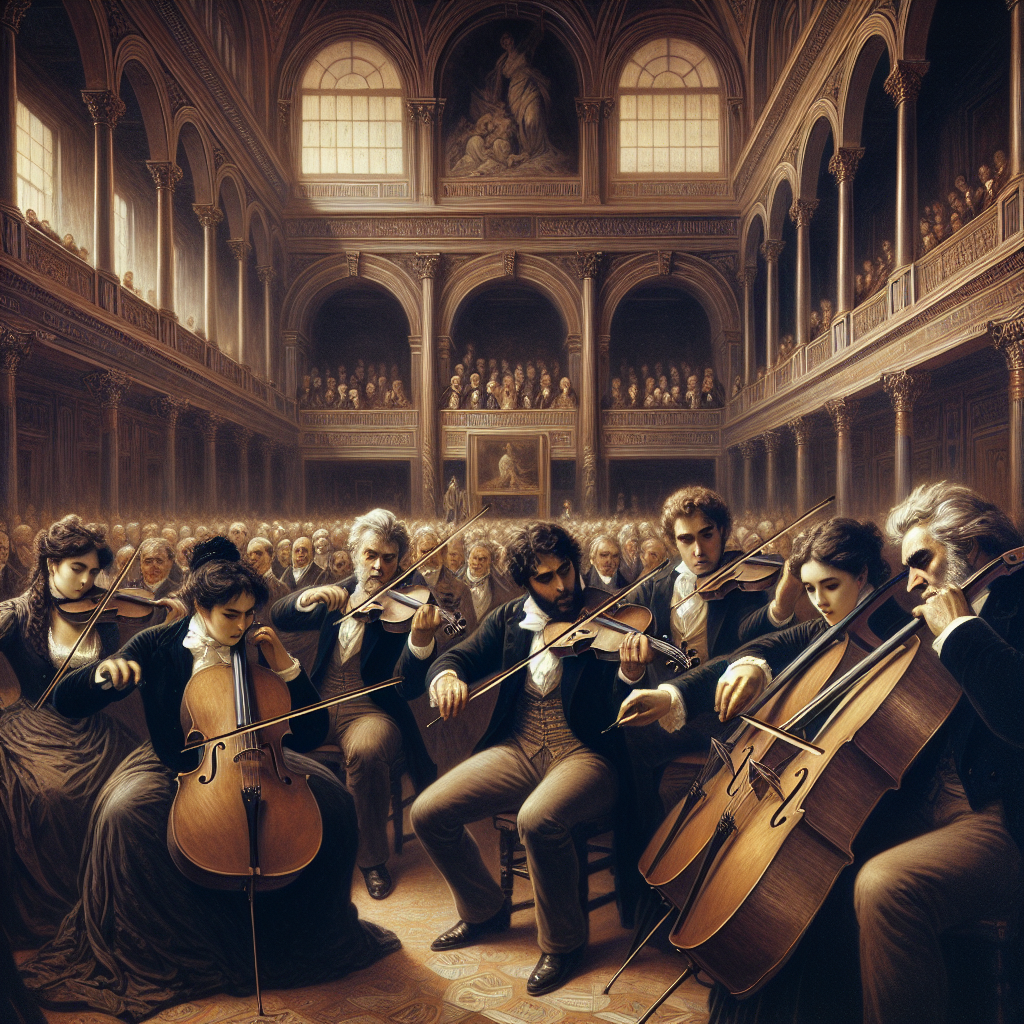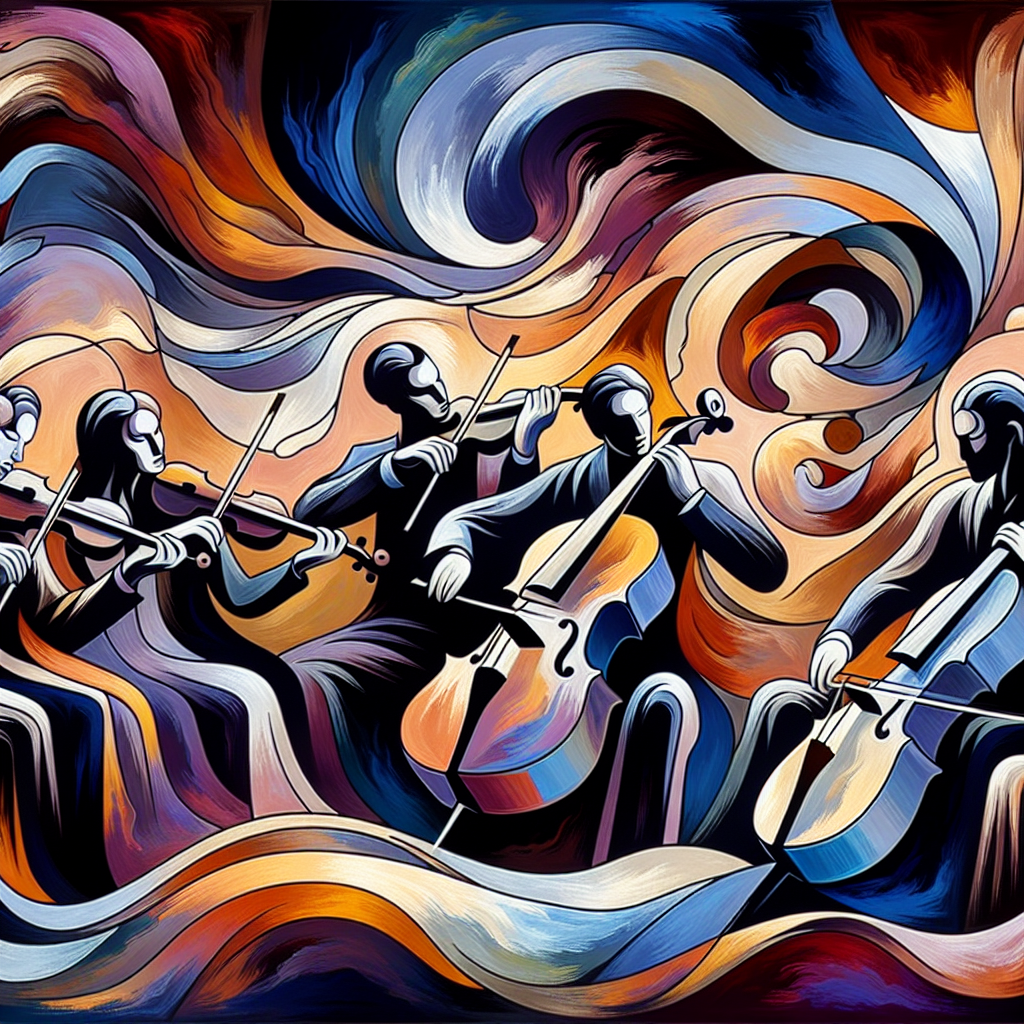
Ludwig van Beethoven’s String Quartet in A Minor – An Insightful Exploration
Ludwig van Beethoven, one of the greatest composers in the history of Western classical music, left a profound and enduring legacy with his masterworks, which altered the course of music forever. His chamber music, in particular, showcases not only his technical prowess and innovative spirit but also his ability to convey deep emotional and philosophical ideas. Among these, Beethoven’s String Quartet in A Minor, Op. 132, stands out as a pinnacle of lyricism and intensity.
Composed in 1825 during a period of personal and physical hardship, including nearly complete deafness, the String Quartet in A Minor reflects Beethoven’s inner turmoil and spiritual resilience. It is a work of great complexity, emotional depth, and structural innovation. This quartet is part of Beethoven’s late string quartets, compositions that have been regarded as some of the most challenging, yet rewarding pieces in the chamber music repertoire.
In this article, we will delve into the history behind this quartet, its structure, and the specific movements that contribute to its legendary status. Through examining its lyrical themes and intense character, we can gain a deeper appreciation for Beethoven’s genius and the powerful emotions that drive this extraordinary composition.
Historical Context
The String Quartet in A Minor, Op. 132, was created during an immensely challenging phase in Beethoven’s life. By the early 1820s, Beethoven’s hearing had deteriorated to the point where he could barely communicate, leading him into profound isolation. Despite these personal struggles, Beethoven’s creative output during this period reached new heights of originality and introspection.
Commissioned by Prince Nicholas Galitzin of Russia, a keen admirer of Beethoven’s work, this quartet was part of a set of three late quartets (Op. 127, 130, and 132). These works were not immediately understood or appreciated by contemporaries due to their unconventional structures and profound expressiveness. Nonetheless, they eventually became celebrated for their innovative qualities and emotional complexity.
The composition of the Op. 132 quartet overlapped with Beethoven’s battle with a severe intestinal illness, which nearly claimed his life in April 1825. This health crisis had a significant influence on the quartet’s spiritual and musical themes, especially apparent in the third movement, which Beethoven subtitled “Heiliger Dankgesang” (Holy Song of Thanksgiving).
Musical Structure
Beethoven’s String Quartet in A Minor consists of five movements, a departure from the more traditional four-movement structure common in classical quartets. This unusual framework allows for greater thematic diversity and emotional depth.
The first movement, marked “Assai sostenuto – Allegro,” sets the tone with a hauntingly lyrical opening that transitions into a vigorous and complex allegro. This movement embodies both melancholy and vigor, reflecting Beethoven’s internal struggle and vitality.
The second movement, “Allegro ma non tanto,” is a lighter dance-like scherzo, providing a stark contrast to the intensity of the first movement. Its playful rhythmic patterns and sudden dynamic changes showcase Beethoven’s mastery over musical form and character.
The centerpiece of the quartet, the third movement (“Heiliger Dankgesang eines Genesenen an die Gottheit, in der lydischen Tonart”), is a meditation on recovery and gratitude. We will explore this movement in more detail in the following section.

Third Movement – “Heiliger Dankgesang”
The third movement of the String Quartet in A Minor is often considered one of Beethoven’s most profound and spiritual compositions. Translated as “Holy Song of Thanksgiving by a Convalescent to the Deity, in the Lydian mode,” it reflects Beethoven’s deep gratitude for his recovery from illness.
This movement is structured in sections that alternate between a serene, hymn-like “molto adagio” and a brighter, livelier “andante.” The adagio sections invoke a sense of solemnity and reflection, with a modal melody characteristic of sacred music. In contrast, the andante passages are more animated, symbolizing renewed hope and vitality.
The use of the Lydian mode, a scale common in ancient church music, adds a timeless, almost otherworldly quality to this movement. It connects the listener to a sense of universality and spirituality that transcends the composer’s personal experience.
This movement, perhaps more than any other in Beethoven’s quartets, reveals the intersection of his suffering, introspection, and spiritual resilience. It stands as a testament to his ability to transform personal adversity into universal artistic expression.
Final Movements
Following the introspective “Heiliger Dankgesang,” the quartet resumes with its fourth and fifth movements. The fourth movement, marked “Alla marcia, assai vivace,” serves as an intermezzo, a lively march that provides a burst of energy and anticipation.
This movement leads directly into the fifth and final movement, “Allegro appassionato.” Here, Beethoven returns to an intense, dramatic style, bringing the quartet to a powerful, emotionally charged conclusion. This movement encapsulates the triumph and resilience that characterize much of Beethoven’s late works.
The interplay between lyrical introspection and powerful, passionate motifs throughout these final movements exemplifies Beethoven’s revolutionary approach to musical composition. His ability to weave diverse emotional threads into a cohesive narrative continues to captivate and inspire musicians and listeners alike.
The conclusion of the quartet leaves an indelible impression, highlighting Beethoven’s genius in balancing complexity with accessibility, and intensity with lyricism.
Performance and Interpretation
Performing Beethoven’s String Quartet in A Minor is a formidable challenge for any quartet, both technically and interpretatively. The emotional range and technical demands require a deep understanding of Beethoven’s intentions as well as exceptional musical cohesion among the players.
Each movement presents unique challenges. The opening movement’s fluctuating tempos and dynamic contrasts demand precise coordination and emotional investment. The scherzo requires deft control of rhythm and playful interaction among instruments.
The third movement, with its spiritual gravity and emotional depth, requires a heightened sense of musical sensitivity and a profound connection to the music’s transcendent qualities. The musicians must balance the hymn-like solemnity of the adagio sections with the rejuvenating energy of the andante passages.
Finally, the energetic march and the passionate finale test the ensemble’s endurance and expressive power, requiring them to maintain intensity and clarity throughout. Successful performances of this quartet manage to convey its complex emotional landscape, leaving audiences deeply moved and inspired.
Conclusion
Beethoven’s String Quartet in A Minor, Op. 132, remains one of the pinnacles of his chamber music oeuvre. Its innovative structure, emotional depth, and sublime lyricism offer a window into Beethoven’s soul, revealing his inner struggles, resilience, and profound artistic vision.
This quartet is a testament to Beethoven’s genius, showcasing his ability to transform personal adversity into timeless, universal art. Its combination of technical mastery and emotional intensity continues to challenge and inspire musicians, while its beauty and depth resonate deeply with listeners.
By exploring the historical context, structural elements, and interpretative challenges of this masterpiece, we gain a greater appreciation for Beethoven’s unique contribution to the world of music. His String Quartet in A Minor stands as a testament to the power of human creativity and spirit, reminding us of the profound impact that art can have on our lives.
As we conclude our exploration of this remarkable work, we are reminded of Beethoven’s enduring legacy and the timeless quality of his music. The String Quartet in A Minor remains an essential work for anyone interested in the depths of human emotion and the heights of artistic achievement.